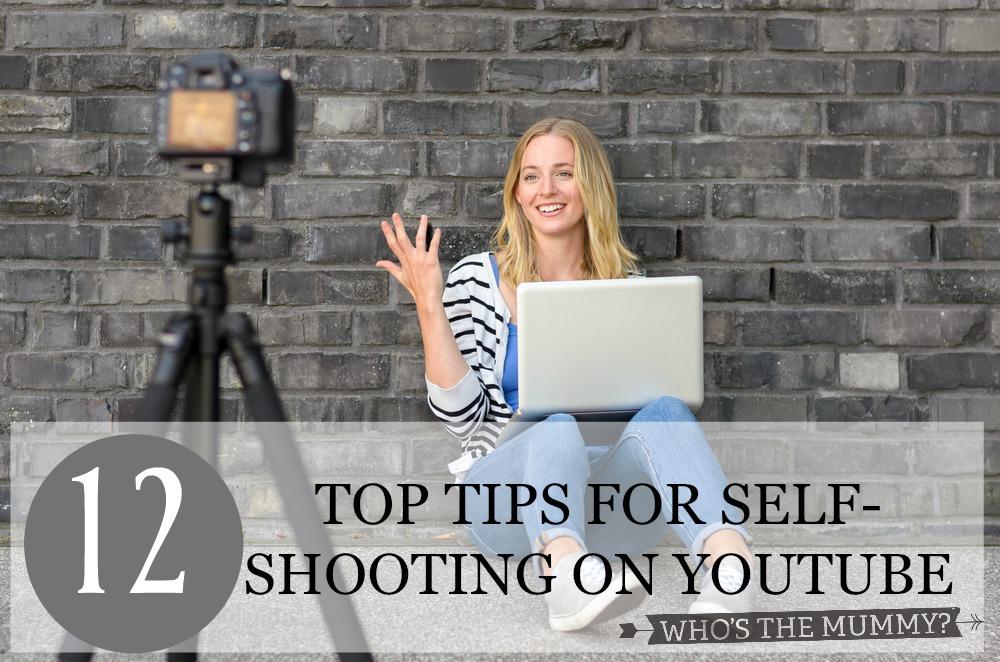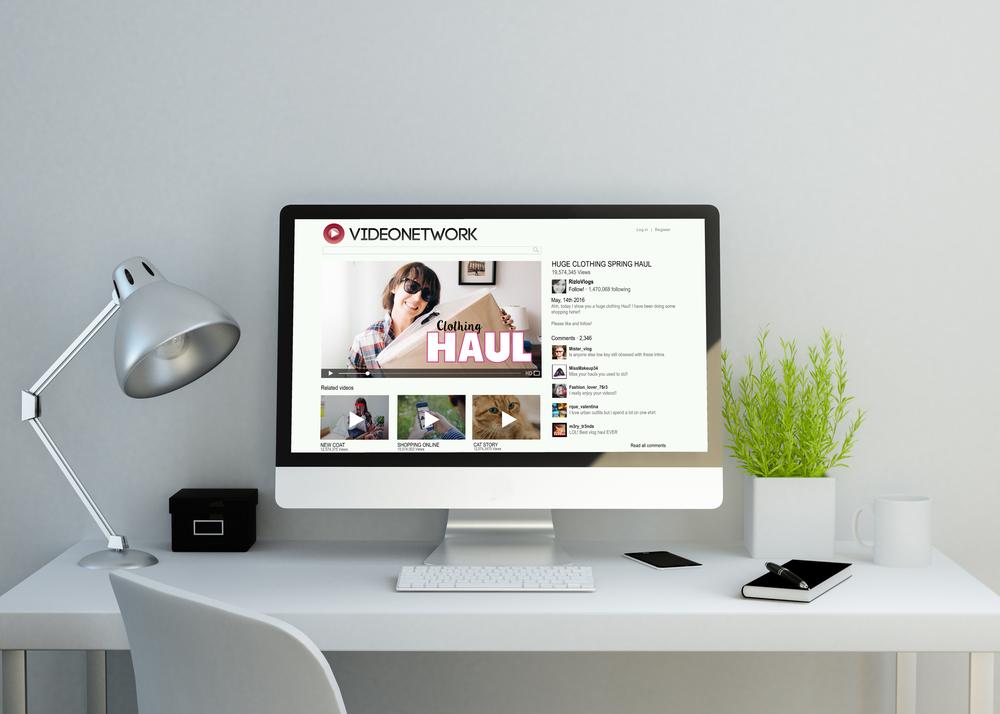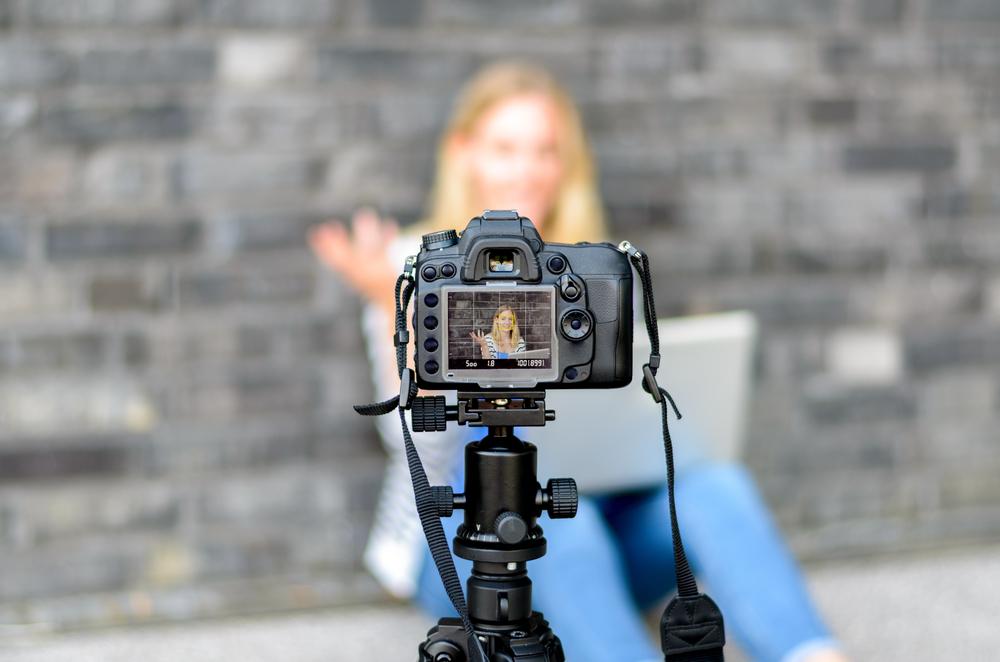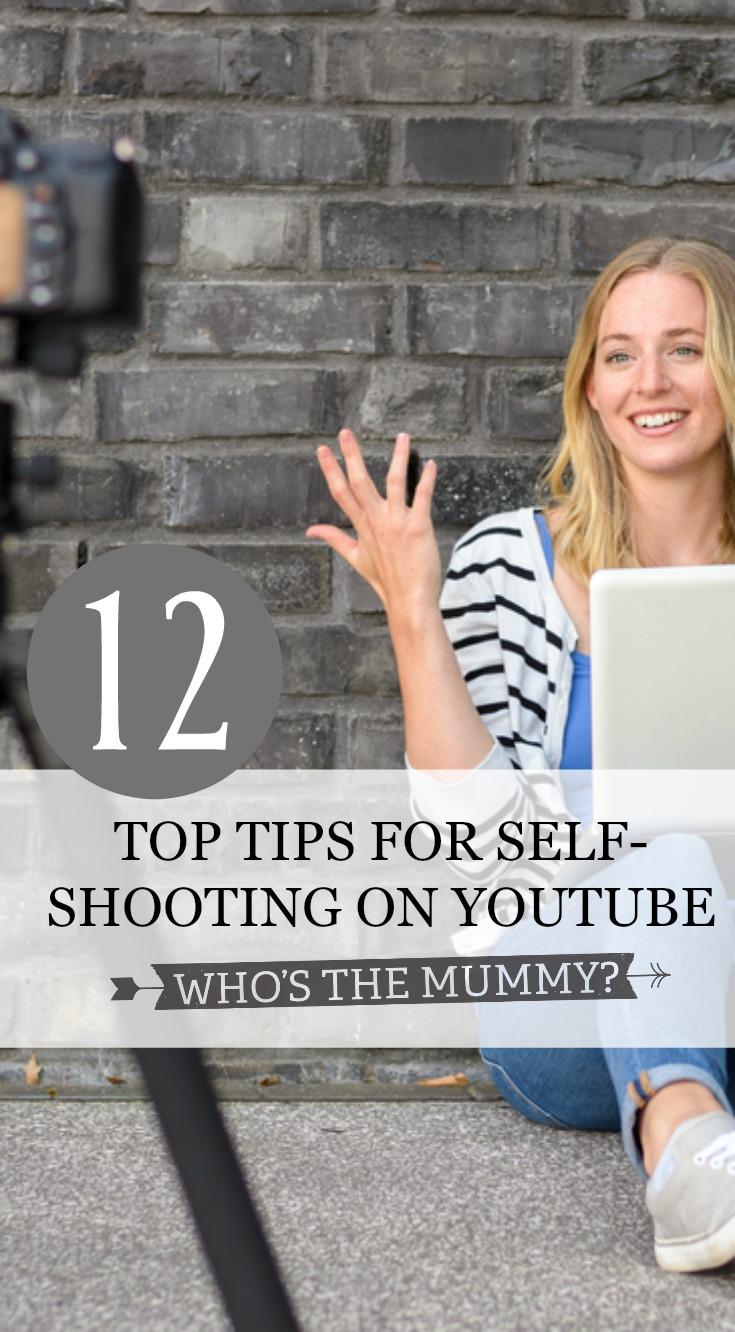
Looking for tips for new YouTubers? I’ve got you!
Most of us sharing content on YouTube are acting as our own cameraman, sound guy, lighting guy and director. And it’s HARD to get all that stuff right, especially when you’re a beginner.
So it’s hardly surprising we end up with shots where we’re ever so slightly out of focus, or sound that’s too loud in some parts, and too quiet in others. Of course, we only ever spot these mistakes when it’s too late to fix them. I love making videos for my YouTube channel, but it’s definitely a learning curve!
Last week, I headed off to London for a workshop on self-shooting for YouTube with professional cinematographer Michelle Tofi. Lots of friends on Facebook have asked me to share what I learned so today I thought I’d share 12 top tips that I picked up at the session. As you can see, I could use the tips…
The key focus of the workshop was on understanding and making the most of the kit that you have – not spending a huge amount of cash on equipment.
The key to successful self-shooting for YouTube, it seems, is planning. It’s all about understanding your camera, where you’ll be shooting, and spending just a few minutes planning ahead to get the right picture, lighting and audio.
Once that’s done, you can relax, hit record – and know you’re capturing something great!
1. Understand Your Aperture
I’m not going to get very technical here. Life’s too short, isn’t it? But here’s what you should know: exposure is about how light your image is. It’s controlled by ISO and shutter speed, but also by aperture.
Think of aperture as being like your eye’s pupil – the wider it opens, the more light your camera lets in. Aperture is measured in f-stops. A small f-stop (like 1.8) indicates a wide aperture, while a high f-stop (say, 11) is a small aperture.
When your aperture is set to a low number, you’ll get lots of light, and a shallow depth of field. This means stuff close to the camera (like you) will be sharp and stuff further away will be blurry. But if your aperture is TOO wide, you’ll end up out of focus every time you move. A good aperture for self-shooting is around F4 to F5.6. You’ll get a soft background, and be able to move around quite a bit, while staying in focus – it’s a classic YouTube look!
2. Use ND Filters Outdoors
We’ve already mentioned how a wide aperture lets more light into your camera, and allows for a shallow depth of field. But if you’re shooting outdoors in bright sunlight and want that shallow depth of field, what can you do? You don’t want to start adjusting aperture while you’re filming, and you also don’t want over-exposed, bleached out footage.
The solution is an ND filter – this is a piece of glass that attaches over the lens, and allows you to cut light travelling into the camera. You can use your wide aperture setting to get the shallow depth of field you often want for self-shooting – without compromising on the lighting. You can buy variable ND filters that let you adjust the amount of light reduction as you shoot, or in different settings.
3. Use ISO with Care
If you’re using a DSLR to film YouTube videos, adjusting the ISO to make your image brighter can seem like a quick fix – but use this option with caution. ISO is a tool that digitally boosts the light given to an image – and because it’s digital, the more you use it, the more ‘noise’ it will add to your image, and the grainier it will appear. Always use aperture to control light where possible, and ISO only as needed.
To get the best results from your camera, Google “native ISO” with your camera model – every camera has its own native ISO setting – this is the level at which you’ll get the best, most natural results. And if you do need to boost ISO in low light, try and use multiples of the native ISO figure or regular ISO settings (100/200/400 are considered ‘better’ than 125/250/300)

4. Custom White Balance
A common issue with home-shot videos is the white balance is off. Our eyes are great at adjusting for different lighting, so white always looks white, but this job is beyond most cameras.
The solution is to set custom white balance on your camera when you’re shooting. Set up your shoot in the lighting and space you’ll be using. Now – take a photo of a white piece of card.
In your camera menu, look for settings/white balance/custom. This is where you tell your camera that the card you just photographed is white. All you need to do now is set your camera’s white balance to “custom” and it will refer to the settings you just gave it. This means wherever you shoot, you’ll avoid a weird colour cast.
5. Use the Right Lens
When you’re starting out on YouTube, you really, really don’t have to go out and buy a lot of expensive kit. Whether you have a compact camera, DSLR or smartphone, you can shoot great footage.
But… if you do have a choice of lenses, go for the shortest lens you can. A 24mm lens is ideal for self-shooting – it will give you a nice sharp image for close-ups and mid-shots, but will let you still move around quite a bit without losing focus. Alternatively, a 50mm lens (or somewhere near that on a zoom lens) will give you a good image but a bit less movement.
I’m slightly kicking myself this week because I’ve been using this 24mm Canon lens for AGES for photography, and never thought to use it for video. D’oh!
6. Frame to Flatter
When you’re self-shooting your YouTube videos, it’s essential to use something to keep your camera level. In the early days, I balanced my camera on books and tables – but the key thing to note is that the camera needs to be high enough. Now I use a tripod – one with an inbuilt spirit level is best.
Most cameras have a grid that splits the camera view into thirds. The most flattering angle when you’re shooting yourself is slightly above eye level. To do this, practice shooting so your eyes appear on the top third line. It doesn’t matter if the top of your head is out of frame if you’re shooting a close up.
Be careful of shooting from below the eye-line. It will give the impression you’re looking down on the viewer. Shoot from too far above, and your head will look weirdly small.
7. Learn your Camera’s DOF
Want to know exactly how much room you have to move without going out of focus? Check out DOFmaster.com. You can plug in your camera model, the lens you’re using, and the aperture. Then tell the site how far away from the camera you are sitting, and it will tell you how far you can move forward and back without losing focus.
I wouldn’t suggest using this ALL the time for EVERY video. But if you mostly film vlogs in the same room at home, experiment with the figures and you can find the ideal aperture for your individual set-up and video style.

8. Upgrade your Lighting
I live in the North of England and lighting here is… challenging. It is often overcast, and my house is quite dark, without lots of big windows. I suspect most people in this country have similar challenges.
If you want to get that professional look to your videos, then one of my best tips for new YouTubers is that to invest in some lighting. I’m going to share the IDEAL set-up, and how to manage if you don’t want to go quite that far.
The ideal lighting for vlogging is to use three lights – a key light, a backlight, and a fill light.
The key light is your brightest light, and should illuminate you (but don’t point it directly at you – bounce it off the ceiling, or a wall, if possible). The second light is a fill light – it should be less bright than your key light, and it fills in shadows cast by the first light. You can pick up lights cheaply on Amazon. Currently, I use two softboxes from Amazon that cost about £50, and I just bought an Aputure
light that was around £100 to use as a fill light, because it’s dimmable, unlike the softboxes.
Your third light is a backlight, this is a light that is behind you (duh). It doesn’t have to be a bright light. A small lamp or fairy lights will both work well. The function of this light is to cast a halo of light behind you, making you seem more separate from your background, giving the image more depth.
This light is why it’s better to shoot in the middle of a room with some space behind you, rather than against a wall.
9. Faking Fancy Lighting
So you don’t have three lights? Don’t panic. If you only have two lights, try to position them on either side of you, so that one of the lights ‘spills’ some light behind you.
If you only have one light, make that your key light, and fake a fill light, by bouncing the key light off a reflector. Don’t have a reflector? Use a piece of white foam board, or even a cardboard covered in tin foil. Silver gives stronger light, while light is more diffuse.
10. Remove Colour Casting
This tip applies particularly if you’re using one or two lights, and they’re using household bulbs, your light might have a yellow colour cast. Daylight can sometimes cause a blue cast to your light. So what can you do?
The quick tip is to use lighting gels – these are transparent films that can be placed over lights to counteract colour cast. Blue films will counteract orange cast, while orange will counteract blue. And these films don’t need to be costly – two of the biggest brands (Lee and Roscoe) both offer free samples on their websites.
11. Plan Your Audio
In general, an audience will find it easier to forgive bad images than bad audio – if you can’t be heard, people will click off your video very quickly.
My smartphone records TRULY terrible sound and my camera is great at picking up everything in every direction, including me, the car driving past, the wind above me… you get the picture.
I picked up a cheap horseshoe-mount mic at PC World for under £50 – the newer version of the model I use is available from Amazon for under £100. I’ve found this set-up works well if I’m recording at home. You can also pick up a decent wired lapel mic
online for £25. It will be fine if you’re filming yourself standing or sitting still. You REALLY don’t need to spend a lot of money to improve the sound on your vlogs.
Oh, and if you’re filming outdoors and want to minimise noise? Stand under a tree or near a wall. Hold a light reflector (or a piece of card) above the microphone to divert the wind away from your mic.
12. Don’t Forget your Phone
Not all self-shooting needs a DSLR, or expensive camera. You can use your smartphone. There are some ways to boost your phone’s footage quality, though.
If you’re shooting slow motion, then Twixtor is a great app for capturing high-quality slow mo (and high speed) footage. Want to boost your phone’s audio? Try something like this Rode Microphone for Smartphone, which will plug right into your phone’s headphone socket.
The iOS app FiLMiC Pro lets you control all aspects of your camera, from white balance and ISO to giving you the ability to adjust the intensity of the camera flash. It’s £7.99, but money well spent if you want to shoot pro quality footage on a phone, and don’t want to spend a bunch of money on a DSLR just yet.
I hope you found these tips for self-shooting YouTube videos useful – do feel free to add comments and questions down below! And I’d love if you subscribe to my YouTube channel!
Pin this Post for Later






Really helpful post thanks Sally and perfect timing as I am double daring myself to get in front of the camera more often and to start doing more videos.
Stevie
Thanks Stevie, glad you liked it 🙂
Wow, I just thought you could use the camera on your laptop – click it on, speak, and click it off. Then go and edit little captions and arrows onto it. Who knew it was complicated.
It’s like anything – you can get as involved as you like!
You can blog on a blogspot domain and not do any coding and that’s fine. But you can also learn a bit about design and themes and tinker. You can take a photo on your phone, or you can learn about photography and buy a DSLR. If filming on your laptop works for you, or your phone, then go for it. But whatever you use, there are tricks to make it look and sound more professional if that’s what you’d like 🙂
This was such a useful post – thanks Sally. The best thing for me though was watching your home tour. We’re about to have an extension and our utility room has a worktop I had already earmarked for ‘blog stuff’. We’re also just about to get shutters on our windows – cannot wait! Must convince Dave that we need a cleaner!
Oh flip! This has made me realise how little I understand about YouTube – lots of work to do over here! Thanks for the tips, I’ve pinned it so I can come back to them when I’ve googled all the terminology 😉
Nat.x
SO much stuff I just haven’t considered here! I always make sure I shoot when there’s good light but I never think to adjust my camera’s settings for filming, I tend to just press record and go. I think I need to read this post a few times over the next couple of weeks to absorb as much info as possible!
Great tips! Just in time for me to get started on my YouTube channel. Especially useful to know how to fake more expensive equipment when just using your smart phone as a trial.
Oh my, I need to do some serious work on my videos. I’m using my iPhone at the moment so will definitely check out that app. Thanks for the tips Sally!
I use my iPhone for about 50% of my videos, it’s TOTALLY workable and you have it with you most of the time – bonus 🙂
These tips are great. Thank you so much for sharing. I need to try and work on my you tube channel and get myself feeling more confident and comfortable about talking and sharing on camera. I hate the sound of my voice. Crazy isn’t it Thanks Sally x
Amazing Sally thank you. Ever so useful. I think I shall take them in some stages though as there’s a lot I need to improve on.
This SO HELPFUL thank you
Great advice – I have not switched my camera off auto yet I need time to master all this!
Do it – AV mode plus custom white balance is the bee’s knees!
This is really interesting Sally. I know I need to embrace YT as a blogger and being slightly more informed might help to make it less scary! Parking this for revisiting.
Thanks – I’ve tried these tips myself this weekend and even just changing white balance has been AMAZING
fab tips!
Damm! this was so so useful. Thanks alot for the information